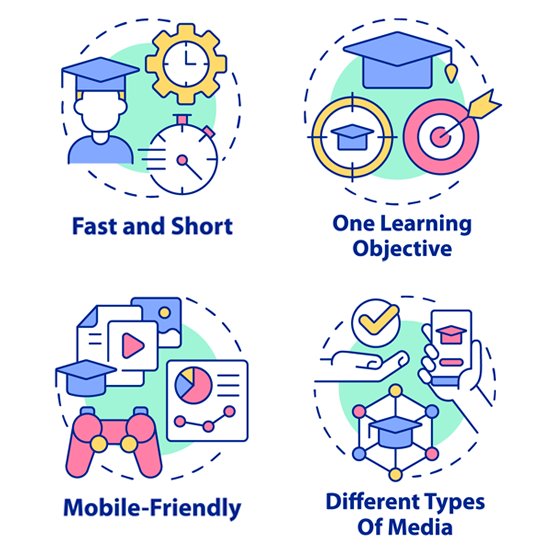Microlearning is an educational strategy wherein an educator “breaks down” complex tasks and behaviors into meaningful pieces that become powerful building blocks for learning. For instance, Darby notes in Small Teaching Online (Darby & Lang, 2019) that “successful coaches worked (with athletes) on small, fundamental skills that had powerful effects” on their learning. This intentional focus can be supported with an educator’s attention to delivery mode and timing. We want to provide scaffolding to learners at exactly the right moment, which is often referred to as “just-in-time learning,” when they can practice, gain experience, and receive feedback with repetition, in real time. This can be done in many ways and on many platforms. Our mobile phones are one of the best examples of this; we have all grown accustomed to thinking of our phones as “Swiss army knives,” or key tools for living in the modern age — serving as restaurant menus or flashlights, among a host of other useful functions. Delivering content through mobile phones makes sense. How can we maximize this potential?

Credit: modified from © bsd studio / Adobe Stock
Related Topics
References/Resources
- Darby, F., & Lang, J. M. (2019). Small teaching online: Applying learning science in online classes. Jossey-Bass.
- Green, C. (2019). Classics in the History of Psychology -- Miller (1956). Yorku.ca. http://psychclassics.yorku.ca/Miller/
- Horvath, J.C. (2019). Stop talking, start influencing: 12 insights from brain science to make your message stick. Exisle Publishing.